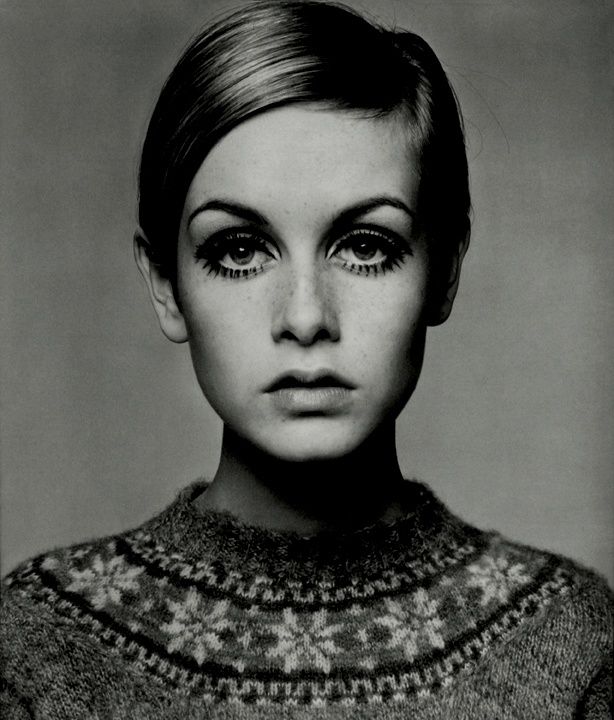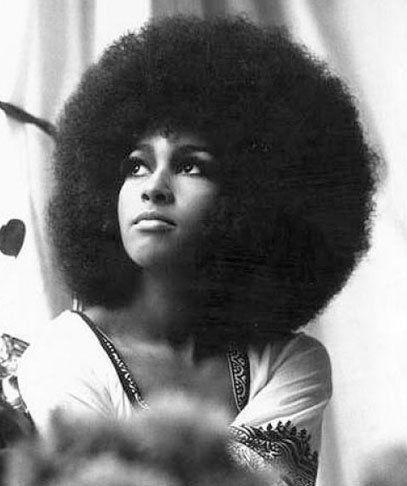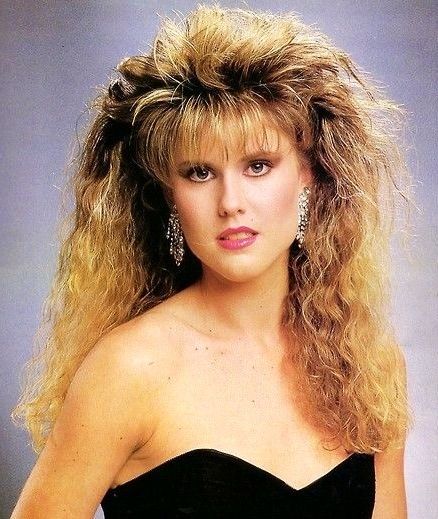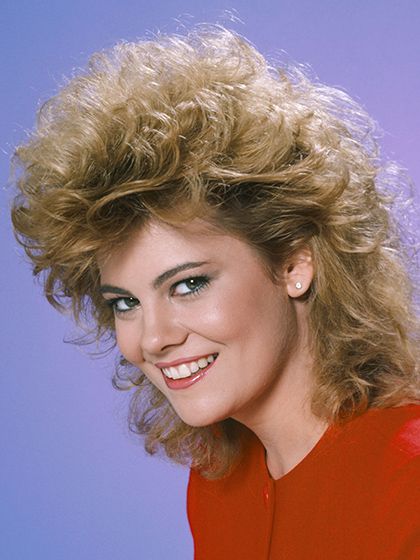A person’s hairstyle is used to create their appearance. Importantly, there is nothing more vital than your hairstyle. Maybe we can list just a few things that are more important than the hair; however, the hair plays a crucial role to women. An American woman can use an average total of six days every year, trying to groom their hair.
For example, if you began caring for your dreadlocks in 1987, by 2018, the person would have used six months on their hair. Indeed, this involves hair washing, styling, drying, and coloring. All of these procedures individually require much time to complete. If you took your hair to the salon to get dyed, the process could last for hours. Let alone, thinking about the rigorous procedure of blowing the hair – this alone could appear to last for over six days.
Regardless, women would still most of their time to perfect their hair. Do you need some proof? Let us examine some of the trendiest hairstyles at different years, including your year of birth. It would be best if you attempted to see one which would take you the most time to have.
1953-54: the reign of the playful curls

Credit: IG@mae.greta.ava
For the playful curls hairstyle, it reigned between 1953 and 1954. It was Ava Gardner who introduced this style to Hollywood. Based on her personal story, when she first started in Hollywood, she was only to get little cameo roles. But, by 1946, Gardner had begun to warm herself into the hearts of Hollywood movie fans.
That same year, she iconically starred in the movie, The Killers, where she played “Kitty Collins.” Then in the subsequent years, she had built up a vast filmography appearing in such films like the Show Boat, The Hucksters, The Snows of Kilimanjaro. Then, later in 1953, she got nominated for the Academy Award for the film Mogambo. While it was her style of acting that she got lauded for, she also excelled at crafting amazing hairstyles, which she might have well just got rewarded for with an award.

Credit: IG@marilynmonroe
Also, Marilyn Monroe played a vital part in making the loosely-curled hairstyle more popular. Her birth name was Norma Jeane Mortenson. The moment that she has begun acting in Hollywood, she adopted the moniker “Marilyn Monroe.” She went to get her hair dyed blonde. Shortly after, her acting career skyrocketed in ways that can be likened to a dream “Hollywood career.”
Success came knocking with her first movie feature in 1946. Shortly, she then acted in the movie “Niagara” in 1953. In 1953, she worked in the classic film, Gentlemen Prefer Blondes, starring as Lorelei Lee. Next, she then starred in a different comedy titled: How to Marry a Millionaire. She then followed this in 1954 with the movie: There’s No Business Like Show Business. While she appeared in these movies, people could not help but easily recognize her though her famous platinum-colored playful curls.
1955-58: the long reign of the shorter locks

Credit: Pinterest
Up until 1958, relatively shorter hairstyles, such as the styles of Monroe and Gardner, still was in vogue. But not everybody preferred the playful variant of the curls. In the early parts of 1950, self-grooming permanent hair-waving kits become commercially available. Based on the book written by Georgine de Courtais titled: Women’s Hats, Headdresses and Hairstyles, women who could not afford it or too busy to make it to the salon are now able to get their hair curled, in different styles, in the comfort of their homes. However, lots of women still opted for the Monroe type of female hairdo.
In the middle part of the 1950s, the women able to afford premium hair professionals are now able to try on new hair treatment styles to make their curls looser. Courtais wrote in her book that “cold hair waving, tepid hair waving techniques, and improved cutting skills helped women get casual, natural-appearing hairstyles.”
Close to the later part of the 1950s, people began to prefer the longer hairstyle, which prompted more women to start to make their hair grow out. It was common to spot a woman with clipped back, slightly curled hair locks at that period.
1959: the emergence of the high ponytail

Credit: Pinterest
Now used to the longer hair, women started to experiment with different novel hairstyles, of these hair designs, the high ponytail was one of them. In 1959, the company Mattel introduced their inaugural Barbie doll, which had on that same trendy hairdo and look. It is important to note that the ponytail of 1959 is much different than that of today.
The iconic look of the later parts of the ’50s, as named by Victoria Sherrow, who authored the Encyclopedia of Hair: A Cultural History, most often included a headscarf. Just the way the Barbie doll of ’59 showed also, curled bangs are also part of this hairstyle.
This hairstyle was quite famous that it led to a girl band using the moniker, the Poni Tails, as their group name. By 1958, the three women have been ranked in the eight place for the most promising singing collective category by Billboard. However, just like the ponytails, this girl group will only reign for a short time. They then abruptly disappeared out of mainstream music, leaving after dropping their last top-rated song, “Who When and Why,” in the year 1960.
1960-64: make way for the beehive and the bouffant.

Credit: Pinterest
While, the classic bouffant hair design technically got introduced in 1956, the book, Women’s Hats, Headdresses and Hairstyles described it never really took off not until 1960. By this time, John F. Kennedy had become America’s president, while his wife, Jackie (Jacqueline Kennedy), was America’s, first lady. Further to this, Jackie became an instant style phenomenon. She had used the bouffant as her signature hairstyle during the early parts of the ’60s. Later, around September 1961, she appeared on the front page of the Life magazine. This then caused more people to notice her excellent bouffant hairstyle.

Credit: Pinterest
Besides the bouffant, an exaggerated yet similar hairstyle, known as the beehive, emerged. Its name reminds people that it indeed looked like a hive. Jackie also rocked the design Margaret Vinci Heldt had created in the early parts of 1960. However, other people also had this hair design.
1963-65: get familiar with the bobs

Credit: Pinterest
While the beehive remained considerably popular from the early 1960s to its middle part, in 1963, a different hairstyle got created to rival the hairstyle. Vidal Sassoon had the manner that women fix this hair. However, unlike the hardened styles for the curls, beehives, and the bouffants, Sassoon created a look that requires low maintenance. He had called this style the “wash-and-wear” hairdo.

Credit: Pinterest
Based on the New York Times, Sassoon style involved the cut in contrary to heavy styling and curlers. His popular cuts include “sharp angles and geometric shapes” designed to enhance the cheekbones and complement other facial features of the woman.

Credit: Pinterest
In 1963, Sassoon had his much-awaited breakthrough when he crafted Nancy Kwan’s (an actress) lengthy and flowing hair into an angular, sharp bob. Then, onwards, the style was dubbed as the Kwan or the Kwan cut or the Kwan bob. Shortly, American and British Vogue were featuring Sassoon’s hair design. This made all other women crave that same hairstyle, and they went and got it.
1966: say hello to the Twiggy pixie

Credit: Pinterest
Lesley Hornby, a young lady, and prospective model, turned into “Twiggy.” What was most iconic about her transformation was her chosen hairstyle. Based on a story by the Telegraph, her agent booked a hair design session at Leonard’s eponymous salon, aptly called the House of Leonard. However, three years before this, Sassoon had built a name around hairstyling. Leonard made a firm decision to level up with Sassoon or even surpass his achievements. Then, Twiggy came along.
Leonard then took a risk and went for the short, boy-like cropped hair cut. To return the favor, he would foot the bill for Twiggy’s upcoming modeling shoot. For what seemed like over eight lengthy hours, Twiggy had her hair dyed blonde while also cut short. However, her career was relatively long.
Though it became more popular in 1996, the pixie has always stayed with us. Celebrities such as Emma Watson and Michelle Williams are two of the stars that have rocked a more modern form of the iconic look.
1967-72: the hairstyle which featured more volume.

Credit: Filmycks
Whereas Pixie cuts might have been introduced to us in 1966, big hair also took off around there. Based on a story from Vogue, it was Catherine Deneuve who embodied the more hairstyle based on her personal hairstyle preferences. She appeared in the movie: Belle de Jour, playing the role of a call girl/housewife. She had her hair exotically pulled back in an unusual “mess.”
Also, InStyle featured vivid pictures where Brigitte Bardot had on in 1956, the Twiggy pixie – through the use of a platinum-dyed blonde wig as she performs in Mam’zelle Pigale – as well as in 1970, her naturally extended and artificially blonde-dyed locks.
Also, in 1973, people such as Cher, had on different big hair. During that time, Cher had maintained a waist-long hair, which she tied into a ponytail. Based on a story on Good Housekeeping, Cher had the hair teased over to form large curls while appearing during one of her many concerts in 1973. Where1s she might h1ve been known as, “the Pop Goddess,” people always felt that her hair preferences added to this.
1973: make way for the cornrows

Credit: Pinterest
Whereas, they were not crafted in the ’70s, cornrows only became more popular by 1973. According to history, Cornrow had come from Africa. Toni Love, a known barber and a cosmetologist based in Atlanta Georgia, spoke to Ebony. He said that the cornrow hairstyle originated as far back in 3,000 B.C. while for men, especially Ethiopia. Toni Love went further to say Kings and Warriors were noticed through the braided hairstyles that they had on.
Whereas lots of people could think that the trend got inspired by Bo Derek, noted Ebony. Technically, she never wore the braids hairstyle until 1979. It was Cicely Tyson, an actress who made cornrows a popular hairstyle in ’73. Her character extensively had on the hairstyle with Sounder, a film. Tyson later explained, “Each time I change my hairstyle, it was never because of my preferences that they are used to authenticate my on-screen characters.” Tyson had told participants from Oprah Winfrey’s Master Class.
However, it is essential to state here that cornrows were not limited to the 1970s. Modern-day celebrities like Alicia Keys and Kim Kardashian still spot the braids to this day.
1974-75: the hair flowing down the middle towards the shoulders

Credit: Pinterest
Around the middle period of the ’70s, the halfway hairstyle emerged. This hairstyle was the right choice for those who needed neither the cropped cut nor the big hair. For this type of hairstyle, there is a middle part cut to the level of the shoulders. If you consider one of the best hairstyles of the ’70s, this style naturally comes to mind.
In 1974, Olivia Newton-John chose the style during the reign of her “I Honestly Love You” song. Additionally, that same year, Suzanne Sommers opted for this style too. For those born around 1974, it is possible their mom had this hairstyle. Why, would they not? The hair comes with easy maintenance and allows for a simple hair routine.
Based on a story by Elle, celebrities continued to rock the center parts style. Kim Kardashian, Cameron Diaz, Jennifer Aniston, and many other celebrities re-modernized the appeal of the hairstyle. But the bounce that came with the blowouts of the 1970s are noticeably missing – sure enough, we like it like that way.
Based on pictures that The Huffington Post had published, it was apparent that Dusty Springfield, Barbara Streisand, and Aretha Franklin also rocked the hairstyle. Furthermore, in the T.V. show: Breakfast at Tiffany’s, a whole new wave of beehive hairstyles was introduced by Audrey Hepburn. In a survey posted in 2013, respondents had voted her hair to be the most remembered hair design of all time – this survey included 50mother hairstyles. The poll’s creator explained that “The style is pretty iconic because it continues to trend despite being released over 50 years old.”
1976: the year of the epic bowl hair cut

Credit: Pinterest
Many people would recognize Dorothy Hamill to be the globally famous Olympic star of figure skating. Alternatively, people still remember her as having reinvented the bowl haircut. Alright, technically, the hair design that she had on was called the “wedge” haircut. However, they are incredibly similar. Based on a news tabloid, soon after she clinched a gold medal in 1976, the hairstyle she reinvented spread like wildfire. Many women, with little girls, included tried to imitate her hairstyle. Then Hamill moved on to become the face of many products of White Rain hair. This brand endorsement only made her popularity soar.
In her personal written memoir, A Skating Life: My Story, Hamill described the hatred of having on short hair while admitting that it had the most straightforward maintenance. As soon as she had read about popular hair designer Suga in several magazines, she had an idea. “It was my dad who wrote a letter to him requesting for him to give me a cut for the Olympics,” she had written. It was adorable. Suga eventually agreed to do this, and the rest is history. “Sure enough, I never knew this wedge hairstyle would become popular,” Hamill wrote. That was undoubtedly the truth.
Whereas her wedge design is no longer in fashion, Hamill’s hairstyle had brought to mainstream popularity can be spotted in the HAIRevolution Exhibition in Denver, Colorado, around 2002.
1977-78: the feathered locks made famous by Farrah Fawcett’s

Credit: IG@alanakstewart
Whenever you think of the name “Farrah Fawcett,” one thing that comes to the mind is her incredibly feathered hair. In 1976, she then got the opportunity to be one of the leading characters in the movie: Charlie’s Angels. A year later, the hairstyle known as “the Farrah” spread like wildfire. Based on InStyle’s story, this subsequently rewarded Allen Edwards, her hairstylist, with tons of business. “People queued down the streets to have me work on their hair,” Allen would later say.
Then Fawcett moved on to collaborate with Faberge. They were a fashionable cosmetics brand reigned in the later parts of 1970 until the middle of 1970. They created their style of shampoo lines by Farrah Fawcett. She also had her conditioner, hairspray, and crème rinse lines based on a story by People.
Furthermore, people said that Fawcett was actively involved with the products that bore her name. During a tour of the Faberge plant in New Jersey, Fawcett even suggested a few things to for the workers to improve on the products, she once said, “I prefer my hair to be squeaky; however, it should not be very squeaky – you should consider adding more vinegar.” While there was no report on what Faberge chose to do with the suggestions, but one thing was clear, Fawcett relished being a member of the production team at Faberge.
1975-79: the rise of the movement for the natural hair.

Credit: Pinterest
While the Civil Rights Movement were busing clamoring for what they felt was right, a new movement – the natural hair interest group was birthed. This made black people (both women and men) stopped using destructive products on their hair while accepting their hair the way it is. When they had on their natural hair, this was a subtle display of activism. Furthermore, History explained this to mean returning to their roots – through literally repossessing their roots.
Afros was one of such methods. Sure, the hairstyles never went without being criticized. A lot of people considered the natural hair to appear unprofessional. Regardless, iconic people, such as the respected Angela Davis, continued to make the look fashionable. This made other people to continue having on the Afro hairstyle.
Whereas, the Afro style popularity peaked from the middle of the ’70s to the later parts, it always hung around. Dee Carrington, a Florida-based hairstylist, once described to Ebony, “It would be right to say that the foundation of that movement is the Afro, but it evolved to a unique hairstyle since it connects with every person differently. We currently have various sizes and shapes of the Afro.”
1980-84: the reign of the teased hair.

Credit: Pinterest
Whereas Farrah Fawcett is known best for her famous feathered hair, she also changed along with time. in 1980, emerged a new hair trend known as the “teased hair.” For everyone that remembers, the teased hair can be recognized from the ’80s since every popular person fancied this style.
Based on a story from InStyle, Fawcett tried this trend headfirst in 1984, as she appeared in the CBS miniseries: The Red-Light String. Sure enough, she was among the numerous celebrities who had tried using the tease. While Cyndi Lauper made her teased hair tussled to come with the punk flare, it was the big bangs for Madonna.
This hair design could be less flattering now; however, it had a run in the ’80s and can be crawling back to mainstream hair fashion. Good Housekeeping said that it spotted some runway models with extremely voluminous hair. Then in 2016, back-combing was declared back in vogue by StyleCaster. Sure enough, the teased hair designs of the 2018s appear quite different from those used in the 1980s.
1985-89: the turn of the perms and the curls

Credit: Allure
Right from the mid-80s down to the decade’s ending, the curls enjoyed the popularity of mainstream hairstyles. Such celebrities like Dolly Parton and Whitney Houston made the trend more popular. Granted, it was some trend. For those without the naturally curly top, they used the permanent weave (perm) as an ideal alternative.
Based on a report from Complex, using perms mean that you have to douse the hair in chemicals, and then to activate it. It gets heated under dryers. For those of us who remember, the chemicals produced an off-putting, strong smell. Some reliable sources describe this smell to be as a result of thio or thioglycolic acid.
Furthermore, the symbolic curls that have enjoyed wide popularity in the ’80s are due to the little and slender rods used to perm the hair. The ’80s certainly had its unique hair fashion.
In these modern times, you can get your hair permed. But it would help if you chose bigger rods to get loose weaves and avoid the thio-inducing nasty smell. But the bad news for lovers of the perm style is that they will still damage the hair.
1987-89: the rise of the mullet

Credit: Pinterest
In the middle of the perm and curl hair trend, the mullet, a different hairstyle, was fast becoming popular. Based on a story from the Fabulous Fashions of the 1980 written by Felicia Lowenstein Niven. The hairstyle – mullets include cutting off the sides and top of the hair to short layers and leave the long length of the back.
Niven explained that at times the different lengths are smoothly blended in. At other times, both levels can become visible. The mullet can be that bad. One of the reasons this haircut was outstanding was because both males and females can wear it.
One of the most famous mullet styles of that decade was the 1987 style by John Stamos. He just began his role as the Full House’s Uncle Jesse, and he brought the hairstyle with him. However, retrospectively in 2015, he told E! News that he felt like two crows died on his head. He then says that nowadays, he looks back at the style and wonder why no one could tell him something wrong about the hair. However, due to the popularity of the mullet in those days, people never thought it was terrible.
1990-93: the simplistic hairstyle

Credit: Pinterest
Then came the ’90s: your massive, bold hair became obsolete, and the simple hairdo became in vogue. Perhaps, the ’90s hair of Kate Moss showed everyone how perfect the simple hair looked. Selecting from the simple ponytail which was pulled back to the tousled wet hair waves, she rocked the trendy style.
Also, part of this era were celebrities such as Alicia Silverstone and Jodie Foster, who rocked the simple hair design in their way. Whereas Foster lowered down her hair, then Silverstone pinned her hair long and straight. Sometimes she used the small clips, the headband, and even the feared claw clip.
Ladies also had on their hair, something known as “scrunchie barrettes.” Technically, you would pull back the hair to a high ponytail. You would then adorn the top of the head with part-clip, part-scrunchie. While the ’90s could have been for the simple hair, it also was the time of some intricate hair accessories.



Leave A Comment